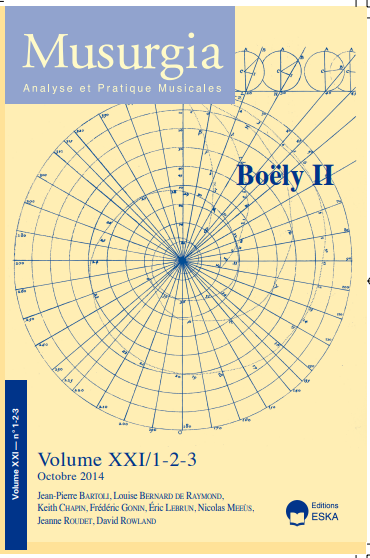Éric LEBRUN, Jouer, classer, comprendre : défendre Boëly aujourd’hui
DOI:
https://doi.org/10.54695/mu.21.01-02-03.1953Abstract
Boëly’s organ work presents multiple challenges to the modern performer:
Choice of instruments: piano, pedal piano, three-hand piano, organ (which
organ?), expressive organ (what is it?)
Performance choices: should one play some polyphonic pages in a strict legato
and articulate more other pages inspired by the piano or the harpsichord? What
tempi should one choose? And how is one to conceive the organ adaptations of
works first thought for the quartet or the piano?
Classifying: the major part of Boëly’s work has been published posthumously
and in random order. An important part remained manuscript. It is the duty of
the performer to elaborate a coherent ordering, especially of the pieces of
liturgical inspiration. The latter were conceived to alternate with plain-chant
melodies of which the origin is not always familiar (Parisian rite).
Understanding: The composer occupies a particular position in the organ
repertory of the 19th century. It must be reread in its proper place, long before
the masterworks of César Franck and Camille Saint-Saëns.
Supporting this magnificent and numerous music (more than 600 keyboard pieces
of a large stylistic diversity) requires a thorough knowledge of the sources and of
the musical context of Boëly and, above all, a true conviction and a personal
affection for the composer







